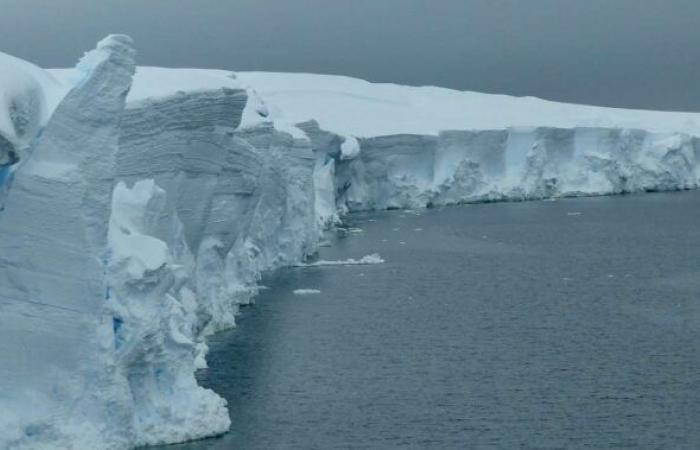The Thwaites Glacier is a huge monster that dominates West Antarctica, covering an area the size of Great Britain or Florida. With a thickness of over 2,000 metres in some places, it is also one of the widest (120 kilometres) and most dynamic glaciers in the world, the cornerstone of the ice capice cap from West Antarctica.
It is therefore not surprising that it is being closely monitored: since 2018, scientists from the National Science Foundation (United States) and the Natural Environment Research Council (UK) study the processes physicalphysical who are monitoring the retreat of the glacier as part of the International Thwaites Glacier Collaboration (ITGC). To do this, they are using cutting-edge technology: robotsrobots submarines and innovative techniques modelingmodeling of the fracture and the flow of ice have allowed us to better understand the mechanisms at the origin of the cast ironcast iron of the “apocalypse glacier” and to improve predictive models. Unfortunately, the latest news is not good.
A disaster that is faster than expected and inevitable
The retreat of the glacier is much faster and more worrying than expected, scientists have just announced in a press release published on the ITGC website. For more than 80 years, the retreat of the giant has been accelerating and, in the last 30 years, the pace has become frantic. The volumevolume The amount of ice flowing into the ocean from Thwaites and its neighbouring glaciers doubled between the 1990s and 2010s. In total, the water from this melting represents around 8% of the current rate of sea level rise (4.6 mm/year)!
If it were to collapse completely, Thwaites would cause sea levels to rise by 65 centimetres, threatening hundreds of millions of people living in coastal areas. In the longer term, this would lead to a collapsecollapse of the ice cap and therefore a rise of 3.3 meters in sea level, seriously threatening the low-lying regions of the world, from New York to Dhaka via London and the Pacific islands… not to mention the irreparable damage to ecosystems.
However, current models predict a continued acceleration of ice loss, which could lead to a widespread collapse of the West Antarctic ice sheet by the 23rd century.e century. There remains uncertainty about the exact timing of this shift, but not in the direction one might hope: understudied processes could accelerate the phenomenon and cause a collapse earlier than expected. The immediate climate interventions that have been called for for decades would come too late and would only delay the inevitable, failing to completely prevent melting in the short term.






